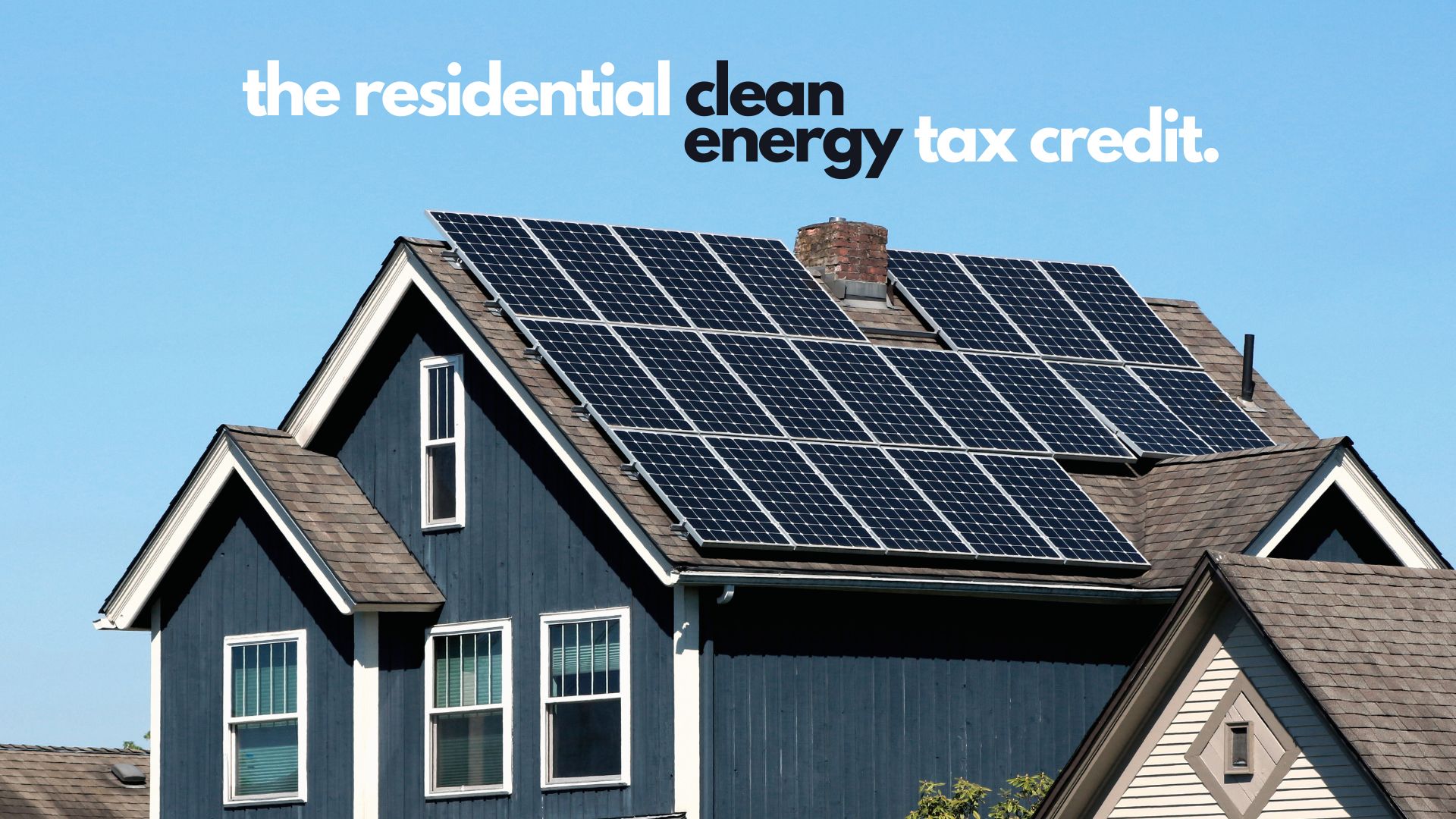Everyone relies on electricity, and the cost of powering your home has become unaffordable to many, prompting them to consider solar energy. Solar systems are expensive, and their initial cost hinders many homeowners from considering their benefits until now. Today, the Solar Panel Tax Credit allows you to use the sun as an energy source.
The United States government signed the Inflation Reduction Act in 2022, including an Investment Tax Credit (ITC) of 30% for solar systems. Homeowners can claim costs back on systems installed during and after 2017 on their primary and secondary homes.
There are various benefits when you install a solar system, which far outweigh its negatives. Consider having a lower electricity bill, having power when the grid fails, and doing your part to keep our planet cleaner, not to mention that you can claim some of the initial cost back from your tax.
What is the Solar Tax Credit?

Solar energy systems like panels help reduce the strain on the power grid, which increases yearly with more homes relying on large amounts of electricity. Governments worldwide try to encourage people to change to some form of solar energy and live a greener lifestyle. The U.S. is leading the solar initiative by giving homeowners with solar systems benefits to encourage others to follow suit.
The Solar Tax Credit initiative provides some relief if you have installed a solar system, which can be costly. If you have panels, you can get a tax break in the U.S., up to 30% of the system's installation costs.
The Investment Tax Credit, or ITC, is a tax credit that encourages homeowners to invest in solar energy systems by generating interest in the market. Under President Joe Biden's leadership, the U.S. government signed the IRA (Inflation Reduction Act) in 2022. The IRA extends a tax credit to those who install panels until 2034.
The program is more than a tax credit and encourages U.S. citizens to lead by example and promote clean energy; its official name is " The Residential Clean Energy Tax Credit." There are several advantages included in the tax credit, like the savings you enjoy on installation and equipment.
What Expenses are Included?
The tax credit does not apply to all solar components and expenses and has some exclusions. You must know what is covered under the tax credit. Here is a list of expenses and components that are included:
How Will the Solar Tax Credit Save You Money?
There are two ways the solar tax credit saves you money. The first is that it provides the opportunity to invest in a system that lowers and even eliminates an electricity bill. The sun generates free energy if you have a system capable of harnessing that energy and converting it into electricity.
Secondly, panels, inverters, and batteries are expensive, and the solar tax credit makes owning a solar system affordable for those who wish to benefit from free electricity. The credit benefit allows you to claim federal tax back on money spent to install a solar system.
Here is an example of how you can save money when installing panels. If you install a $24,000 system, the tax credit allows you to claim 30% back, totaling $7,200 the year you complete the installation. (Related article: Energy Efficiency Rebates and Tax Credits for Home Improvements in 2023)
How Does the Solar Tax Credit Work?
The Department of Energy claims that the average tax savings is $7,500, and the percentage varies depending on the year the system is activated. Various factors influence the tax credit, and here is a breakdown that provides an overview of how you can benefit when installing a solar system:
System in Service | Credit Amount |
|---|---|
2017 to 2019 | 30% |
2020 to 2021 | 26% |
2022 to 2032 | 30% |
2033 | 26% |
2034 | 22% |
Who Can Get the Solar Tax Credit?

Regardless of whether a taxpayer has a primary or secondary residence, the U.S. Department of Energy provides a tax credit. If the system is communally owned or you are a tenant stakeholder in a co-op, you can claim your portion invested.
Some exclusions exist on the tax credit, including members of a power-purchasing co-op and leased solar systems. The credit is designed to incentivize homeowners to consider a green lifestyle and not for those who want to exploit it for financial gain.
How Do You Qualify for the Federal Solar Tax Credit?
If you are considering installing a solar system and want to know how to benefit from the tax credit, you must know that not all systems qualify for federal aid. Here are general guidelines to help you make an informed decision:
It is essential to know that not all costs can be claimed from the tax credit, and work done to support the solar system, for example, is seen as a structural function and excluded.
Can You Claim Solar Tax Credit on Second Home?
The solar panel tax credit's main function is to provide financial relief to homeowners who wish to live a greener lifestyle and to promote energy saving. The tax credit is available to any homeowner and the few who can afford a second home. If you have a second home, you also qualify for the solar panel tax credit, but the home must be used for residential purposes.
If you want to add solar panels to your second home, consult your accountant to determine how you can benefit from the federal incentive.
How Do You Claim the Solar Tax Credit?
To enjoy the benefits of a solar tax credit, you must be informed of the procedures and details before you claim. Often, suppliers are well-informed and can help you understand the procedure while supplying you with all the documentation concerning the purchase and claim.
Here is the documentation and instructions you need to claim tax for your solar system:
Final Thoughts
Today, solar systems and their ability to reduce electricity consumption pressure from the grid are becoming popular. The U.S. provides a tax credit of 30% to homeowners who install panels and wind and geothermal energy-saving systems. There are some exclusions, and you must consider the benefits before dismissing a solar system's potential. (Related article: Solar Power For Homes: Is It Worth The Investment?)

